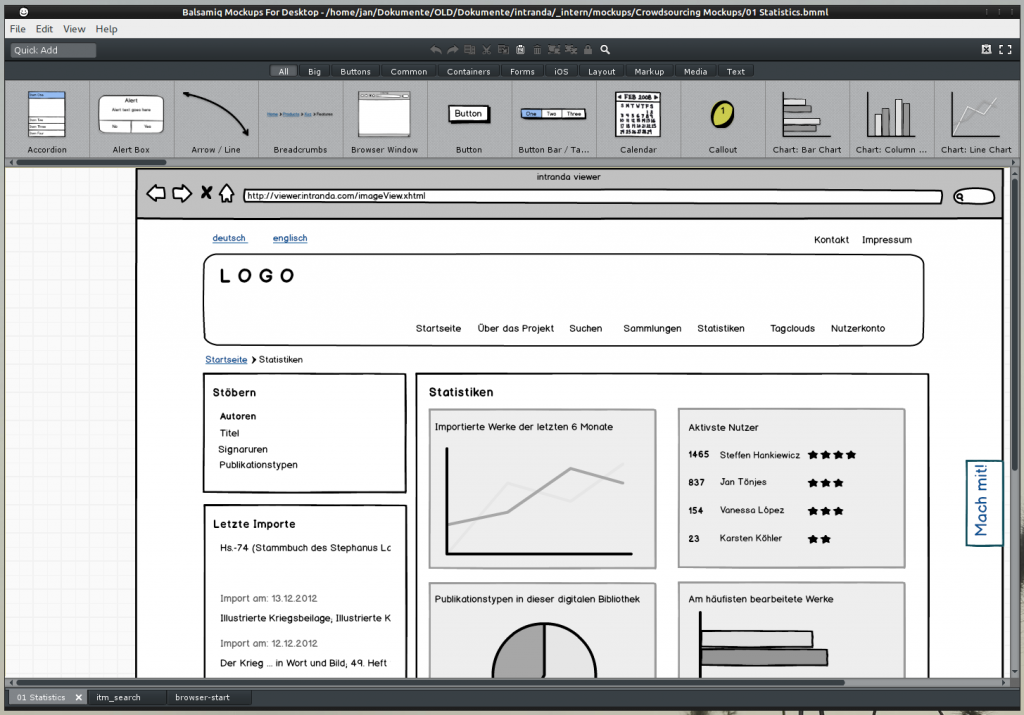Ich wollte mir kuerzlich Balsamiq Mockups unter Ubuntu Linux 13.10 64bit installieren. Dafuer muss ich Adobe Air installieren, das wird aber seit 2011 fuer Linux nicht mehr weiter gepflegt. Die Version 2.6 ist die letzte offizielle Version.
Um Adobe Air zu installieren waren die folgenden Schritte notwendig:
- Eventuell i386 Architektur hinzufuegen
sudo dpkg --add-architecture i386 sudo apt-get update
- i386 Bibliotheken fuer Adobe Air installieren
sudo apt-get install libxt6:i386 libnspr4-0d:i386 libgtk2.0-0:i386 libstdc++6:i386 libnss3-1d:i386 lib32nss-mdns libxml2:i386 libxslt1.1:i386 libcanberra-gtk-module:i386 gtk2-engines-murrine:i386
- libgnome-keyring0:i386 installieren:
sudo apt-get install libgnome-keyring0:i386
- Symlink erzeugen, damit Adobe Air diese erkennt:
sudo ln -s /usr/lib/x86_64-linux-gnu/libgnome-keyring.so.0 /usr/lib/libgnome-keyring.so.0 sudo ln -s /usr/lib/x86_64-linux-gnu/libgnome-keyring.so.0.2.0 /usr/lib/libgnome-keyring.so.0.2.0
- Adobe Air installer herunterladen und installieren:
cd /tmp wget http://airdownload.adobe.com/air/lin/download/2.6/AdobeAIRInstaller.bin sudo chmod +x AdobeAIRInstaller.bin sudo ./AdobeAIRInstaller.bin
Danach konnte ich ohne Probleme die Balsamiq Mockups 64bit Debian Datei herunterladen und installieren. Herunterladen von:
und dann installieren mit:
sudo dpkg -i MockupsForDesktop64bit.deb |
Balsamiq kann man dann zum Beispiel vom Terminal aus starten mit:
/opt/Balsamiq Mockups/bin/Balsamiq Mockups
